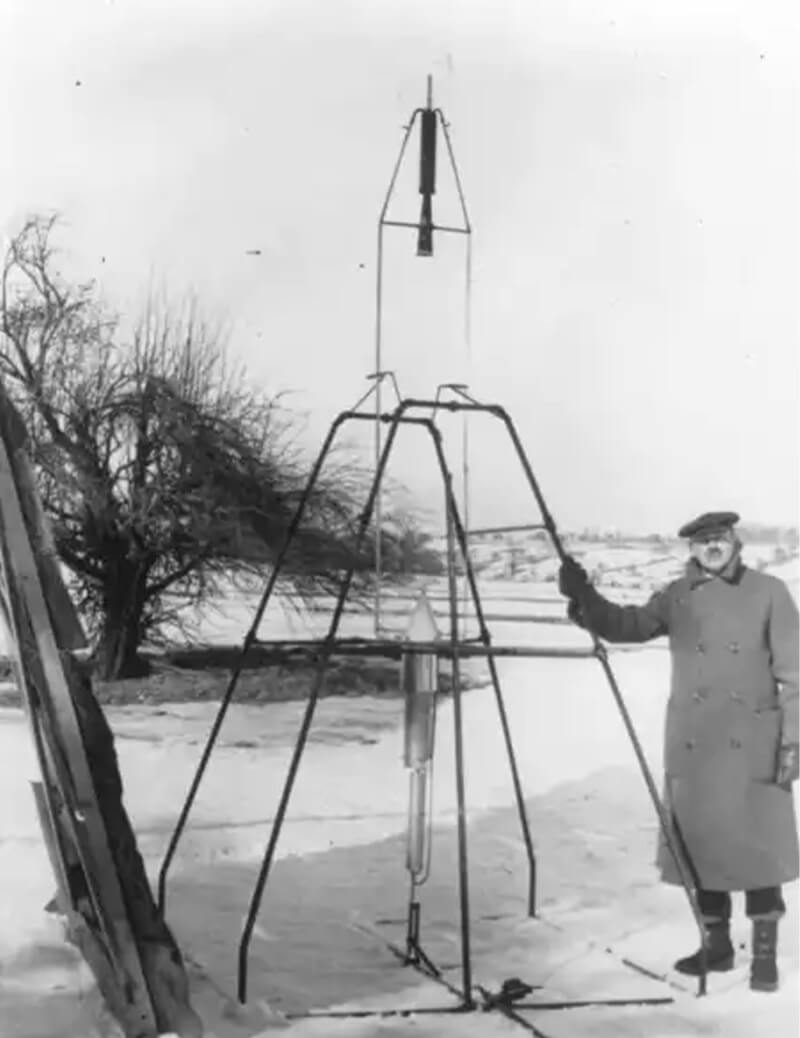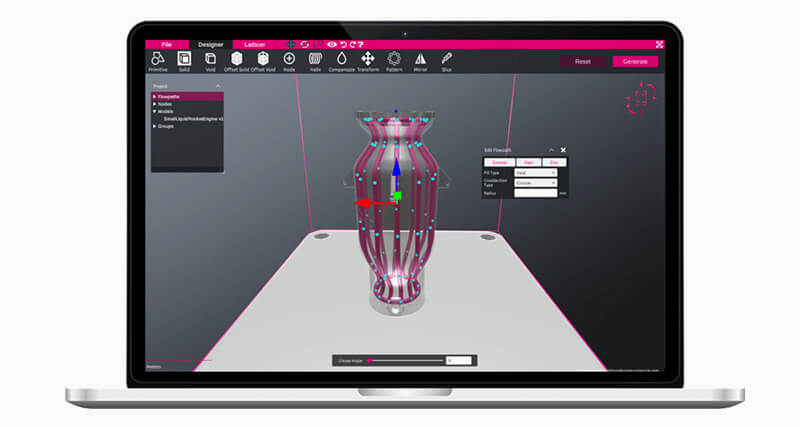How Additive Manufacturing Became a Game-Changer in the Rocket Propulsion Industry
Additive manufacturing (AM) in the rocket propulsion industry is a huge opportunity. The process can achieve optimal design while keeping costs low. Private enterprises have become heavily involved in the space industry and when it comes to private business, whoever successfully (and safely) launches the largest payload into space with the most efficient engine will win the race. A key factor for human space activity is keeping propulsion parts cool enough so that they don’t fail, regardless of engine and payload size. Another is the ability to reuse parts, with cost-effectiveness in mind. Therefore, space propulsion systems are very important and AM is front and center – here’s why.
Human space activity has grown exponentially over the last three decades. Satellites, exploration, scientific research, permanent residency on the International Space Station and NASA’s Artemis program are just a few examples.
With so much competition, innovation has skyrocketed and organizations are using advanced manufacturing techniques like AM more and more, particularly for space launch systems and satellites.

A digital render of the E-2 engine on the Launcher Light launch vehicle for small satellites (Courtesy of Launcher)
Vital Components – Material Selection and Cooling
When people think about engines, they usually think about rotation. However, rocket engines are reaction engines. This means they “throw” mass in the form of high-pressure gas in one direction to get a reaction in the opposite direction.
A rocket engine is all about getting exhaust gas as hot and pressurized as possible and then making it move in one direction – fast – without melting the engine walls. And by fast, we mean supersonic.
Today, space propulsion systems are generally powered by liquid fuel. To reach orbit, combustion temperatures inside the combustion chamber can exceed 5,792℉ (3,200℃). Therefore, material selection and cooling for the nozzle is vital.
Organizations like SpaceX, Orbex, and Rocketlab have taken various approaches to material selection for rocket nozzles. Some use high-temperature superalloys such as Inconel 718, and others have adopted higher conductivity materials, including copper alloys such as copper chromium zirconium (CuCrZr).

Rocket nozzles produced using additive manufacturing by (top left) SpaceX, (top right) Rocketlab and (bottom) Orbex
A typical rocket engine consists of the following:
- Injector
- Combustion chamber
- Nozzle
The injector mixes the fuel with the oxidizer, and then the igniter creates the spark to light it within the combustion chamber. This produces hot gas, which moves through the nozzle to create thrust. The nozzle is the end component of the propulsion system and gets incredibly hot. This is why cooling is so important.
A Brief History of Rockets
Robert Goddard essentially began the rocket engine industry by building and flying the first liquid-fueled rocket in 1926. He was the first person to apply the convergent-divergent (CD) nozzle without which rocket engines wouldn’t work because supersonic flow in the engine would be impossible. A CD nozzle converts high-pressure gas molecules traveling in all directions into a high-velocity gas moving in one direction.

First flight of a liquid propellant rocket, by Robert Goddard in 1926.
After the Apollo project ended, the largest obstacle to more space activity was cost. The primary goal of NASA’s Space Shuttle program, which began in 1971, was to provide a consistent, reliable mode of transportation to the International Space Station (ISS) with high payload. A key element of the Space Shuttle program were the reusable parts, which reduced cost.
Rocketdyne developed a new liquid-fueled engine in 1971 that would become the Space Shuttle Main Engine (SSME). Regenerative cooling was also applied. Interestingly, Robert Goddard had invented regenerative cooling back in 1921, but had rejected it as being too complex.

F1 Liquid Fuel Rocket Engine – 1971. Image courtesy of https://www.flickr.com/people/nostri-imago/
How Does Cooling Work?
Without cooling, a rocket engine would heat to its melting point within seconds and the walls would become so hot that the walls would fail.
The factors affecting heat transfer are:
- Gas temperature
- Density
- Velocity
These are all far higher in rocket engines than in other internal combustion engines.
There are six processes for cooling a rocket, although for liquid-fueled rockets, regenerative cooling is almost always used:
- Regenerative cooling
- Dump cooling
- Film cooling
- Transpiration cooling
- Ablative cooling
- Radiation cooling
Regenerative Cooling
With regenerative cooling, one of the cryogenic rocket propellants (part of the liquid fuel) is passed through the nozzle and combustion chamber to liquid cool the metal. This acts as a heat exchanger by absorbing thermal energy through convection. In the process, the fuel is preheated, which resembles a regenerative heating cycle – and this is how it gets its name.
The 1971 Rocketdyne engine achieved regenerative cooling by flowing liquid fuel through rectangular cooling channels, machined into the exterior surface of the chamber and nozzle. This was the most reliable method for cooling channels despite limited tolerances and exponential cost. There’s a lot of merit to utilizing the fuel as a coolant; one of these is that reusing the energy absorbed through cooling is very cost-efficient and is a key reason why regenerative cooling is still so popular.
Why Did Regenerative Cooling Need to Innovate?
Liquid rocket engine components traditionally require complex manufacturing processes to fabricate the thin-walled large scale features of a nozzle with channel cooling. Therefore, developing internal cooling channels were expensive and time-consuming. For instance, the F-1 engine built as part of the Space Shuttle program was made up of more than 5,000 individually manufactured parts (not including the injector). Also, the parts required machining and brazing, which added to the time and cost.
Reusability is also one of the best ways to reduce the cost of space transport, and for this, parts need to have an operating life of hours rather than seconds. For this, you need AM.
Why Additive Manufacturing in the Rocket Propulsion Industry?
AM has become a groundbreaking production method in the rocket propulsion industry. Cooling channels are still vital, but the fabrication method has changed.
The Four Key Principles of Design for Additive Manufacturing
If we review our four key principles of design for additive manufacturing (DfAM), we see that rocket nozzles are excellent components to make via AM. These four principles are:
- Design for the correct additive manufacturing process
- Design for minimal material usage
- Design for improved functionality
- Design for part consolidation
With AM, coolant channels that would require many operations to manufacture traditionally can be designed and made in one process, e.g., part consolidation. The cooling channel configurations are printed directly into the thrust chamber and nozzle. You can see this in the photo below.

CuCrZr rocket nozzle with regenerative cooling channels produced by 3T-AM and Launcher
AM also allows the coolant channels to be formed through the additive technique that’s “closed out” in the same operation, which cuts out the complexities of plating or brazing.
Parts are also consolidated in other ways, such as incorporating individual features like injectors within the combustion chamber and the nozzle into a single part. This can save time on assembly and reduce the risk of failures that occur at brazed joints.

Ariane 6 injector plate printed as a single part. An example of how design for part consolidation can be used in AM.
One of the most effective ways to increase a component’s life – which is defined by reusability in the space industry – is to reduce mechanical stress and thermal loads. AM simplifies the production of space propulsion systems by eliminating many processing steps. This provides cheaper and better-performing reusable parts that require shorter lead times.
Sulis can help designers of parts and satellites add functional conformal cooling channels inside of imported components.

Rocket nozzle with conformal cooling designed in Sulis.

Rocket nozzle designed with Sulis.
The Design Freedom of AM for Space Propulsion
AM delivers design freedom, unlike any previous manufacturing technology. With this freedom comes the potential for space propulsion part performance at a level beyond what we’ve known before. Aerospace is a key industry where reduced weight and performance gains can lead to significant cost savings over the lifetime of the part and these are key benefits of AM. The component that is now almost exclusively manufactured using AM is the rocket nozzle.
Improvements and innovations are being made rapidly as the space race continues and the time to get involved is now.
Click on the links provided here to learn more about Altair’s aerospace and additive manufacturing capabilities.




